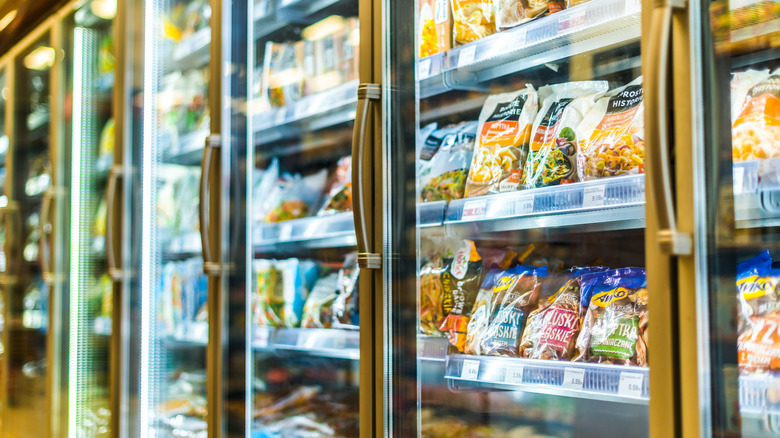What Really Happens When Dollar Stores Replace Grocers
The Anacostia River branches off the Potomac just two miles due south of the U.S. Capitol building near the Nationals baseball stadium, running through Washington, D.C. past the National Arboretum, and into Maryland. Across the 11th Street bridge is a low-income and predominantly-Black neighborhood (per Statistical Atlas) which, on a map published by the D.C. Policy Center, is lit up with blue dots, each marking a bodega or corner store. The area contains only two full-service grocers — which, as the map shows, are abundant and accessible everywhere north and west of the river.
As is the case in many American cities, the extent to which residents of the nation's capital have sufficient access to affordable food — especially fresh, better-for-you food — is determined to a significant extent by their race and class. Anacostia is unambiguously a food desert, which describes areas in which: (1) the closest supermarket is more than a half-mile away by foot; (2) more than 40% of residents do not have a car; and (3) the median household income for families of four falls below the federal poverty line. As one native pointed out in a WAMU report, though, "A desert is natural. It's manufactured by the planet." By contrast, "This is planned, and it's obvious. It's food apartheid." Complicating the problem, according to Eater, is the emergence of dollar stores, which have cropped up in many of these neighborhoods to fill the void created by the dearth of full-service grocery stores.
Officials feel dollar stores not a solution for food deserts
Three years ago, Lorraine Cochran-Johnson, commissioner of Georgia's DeKalb County, decided it was time to stop building new dollar stores in her district. The community — a suburban area about 10 miles northeast of Atlanta — was already home to plenty. Most are concentrated in the county's Seventh District, the majority of whose 380,000 residents are Black (via the Commissioner's website). Cochran-Johnson renewed the moratorium on the construction of new dollar stores in 2021, pending the outcome of a Georgia State University study on their impact on crime, property values, and the economy (per The Atlanta Journal-Constitution).
The problem? Findings from a significant (and growing) body of social science research indicate the proliferation of dollar stores has tended to exacerbate rather than help to ameliorate the scarcity of sufficient, accessible, fresh, and healthy food in food deserts. For one thing, these stores rarely, if ever, carry fresh produce. Additionally, they are specifically designed for customers who can only afford smaller quantities of goods whose price pound-for-pound far exceeds that which a grocery store would charge so they trick customers into spending more money (per Eater). Also, their market saturation discourages grocers from opening nearby, and they are often magnets for crime. On top of these concerns, the U.S. Food and Drug Administration reported in February that it had found unsafe conditions in some Family Dollar stores, including evidence of rodents and birds within the stores.

